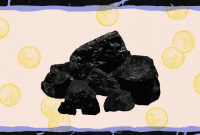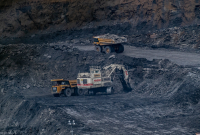Support strong Canadian climate journalism for 2025
We were invited to a celebration recently; one that brought hope for a brighter future. The Canadian Physicians for the Environment (CAPE) are celebrating not only their 30th anniversary this year, but also an incredible milestone - the end of coal-fired power in Alberta. The closure of Alberta’s coal power stations will mark the end of an era and is symbolic of the transition to a low carbon future.
However, celebrations are likely to be muted, as coal mining exploration on Alberta’s eastern slopes rears its head once again. Despite a commitment to eliminate coal-fired electricity, the provincial government is again pulling out all the stops to increase coal production for export. Another coal mining project is being proposed in Alberta and most of our fellow Albertans remain unaware.
Currently under review is an expansion of the Vista coal mine, which would produce coal to burn for electricity (thermal coal). Coal-fired power plants emit carbon pollution and tiny airborne particles that cause respiratory and cardiovascular disease, contributing to over 6.5 million deaths globally every year.
Air pollution from thermal coal has been associated with higher risks of premature death, visiting the emergency room for asthma and other lung diseases, and cardiovascular events like heart attacks and stroke. This is why we and our fellow physician colleagues have campaigned for a coal phase-out for decades, alongside other environmental groups and concerned citizens.
Thermal coal also contributes to greenhouse gases that warm the planet, with 2023 on record as our warmest year yet, and so far, 2024 is proving to be even warmer. Fire ravaged Canada in 2023: a record 18.5m hectares went up in flames, an area twice the size of Portugal.
Fires have always been a part of Canadian forests but 2023 saw a staggering departure from previous norms and is a grave omen of what to expect as carbon emissions increase unabated. Indeed, the Canadian fires of last year produced a decade's carbon emissions in one year, and accounted for about six per cent of global carbon emissions. Needless to say, the health impacts from those fires will be felt for decades.
This year, we saw the devastation of Canadian communities, as a fast-moving fire destroyed parts of Jasper, Alberta. The blaze caused 25,000 people to flee. Homes and businesses were lost to a wildfire that local people called a “wall of flames.” The impact on people’s health and livelihoods is the human face of climate change.
The damage to the environment and human health from intensifying wildfires will increase until we bring down carbon emissions. This is why stopping the production of more thermal coal for export is so important.
If allowed to expand, the Vista coal mine, located just 40 kilometres from the eastern edge of Jasper National Park, would be one of the largest thermal coal mines in North America. So how is this expansion even on the table, given current provincial and federal commitments to phase out thermal coal?
The devil is in the details. Apparently, despite Canada’s pledge to phase out thermal coal exports and end all coal-fired electricity production nationally by 2030, mining coal for export — to be burned elsewhere for fuel — is still ongoing. This is deeply disturbing given the known health impacts of burning fossil fuels, which can extend far beyond the borders in which they are generated.
This failure to recognize and address the negative health impacts of environmentally damaging infrastructure projects is in direct contravention of the duty of our elected representatives to act in the best interests of their constituents.
Beyond the health impacts of burning coal for fuel, there are substantial environmental impacts from the mining process. A preliminary review from the federal impact assessment agency on the proposed Vista mine expansion highlights that critical fish habitat in the Athabasca River Basin and related watersheds would be at risk, which could further harm the endangered Rainbow Trout and threatened Bull Trout populations.
Environmental alteration from mining also impacts migratory birds through loss of habitat and access to resources. Furthermore, the preliminary environmental review suggests mining activities may have detrimental impacts on the rights of Indigenous Peoples, including changes in access to sites of cultural significance and impacts on traditional lands and resources.
The expansion of any thermal coal mines should be unthinkable, if Canada is to meet its environmental commitments nationally and internationally. The impact of the expansion of the Vista coal mine goes far beyond the local and regional areas, and should be subject to a federal review and impact assessment.
As Alberta celebrates the end of coal-fired power in the province, let’s put the brakes on exporting this same dirty fuel overseas. Let’s not let our Alberta fish and migratory birds be the proverbial canary in the coal mine.
Claire E.H. Barber MD PhD FRCPC is a rheumatologist, epidemiologist and health services researcher in Calgary, Alberta. She is a member of the Canadian Association of Physicians for the Environment (CAPE), Alberta Chapter.
Julia Sawatzky (she/her) is an Edmonton-based resident doctor training in emergency medicine. She is a board member of the Canadian Association of Physicians for the Environment (CAPE) and co-Chair of CAPE Alberta.
Philip Barber is a stroke and cognitive neurologist and professor at the University of Calgary. He directs the Stroke Prevention Clinic at the Foothills Hospital in Calgary and is a member of the Vascular Illness Team of the Canadian Consortium on Neurodegeneration and Aging (CCNA).








Comments